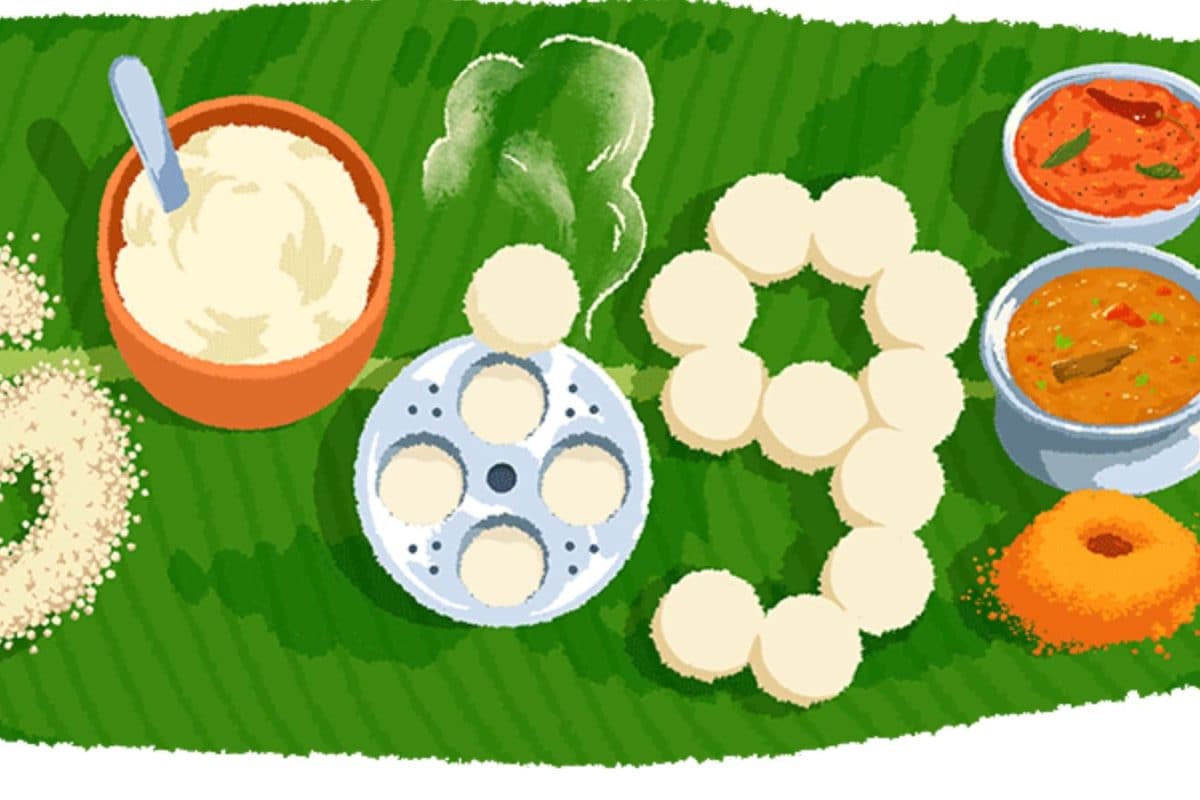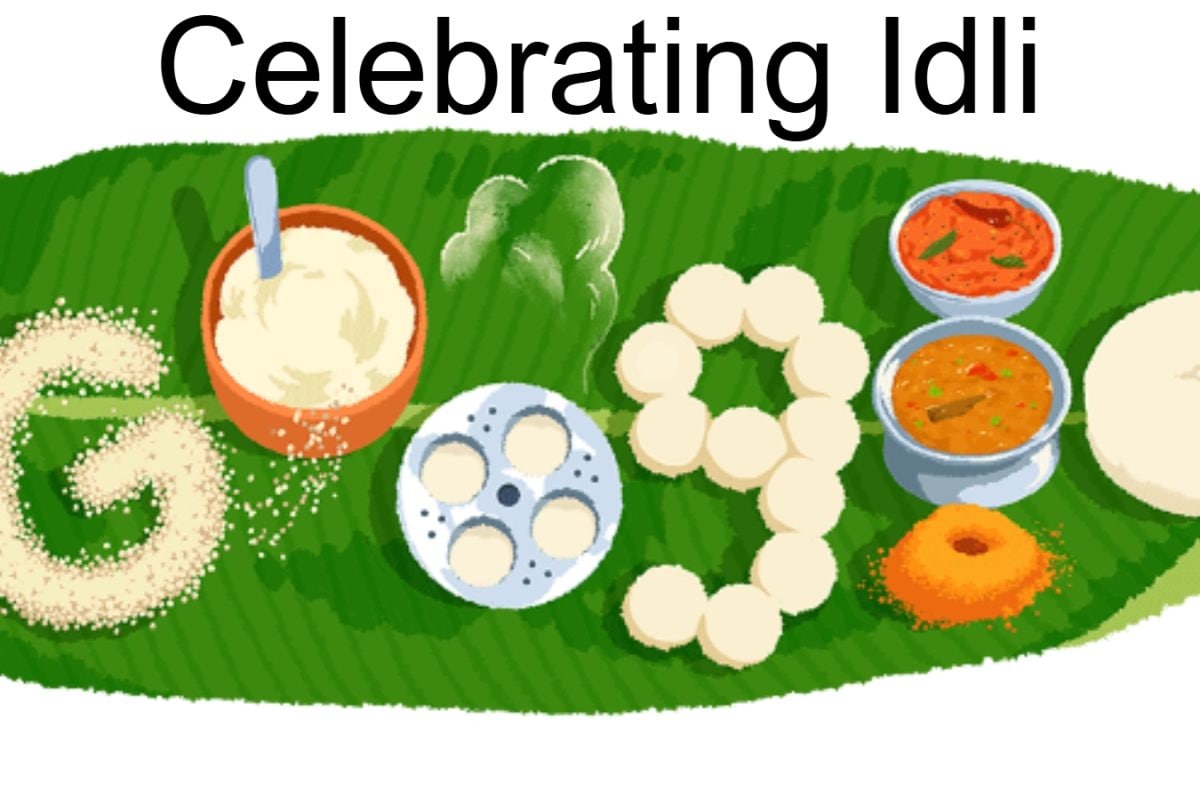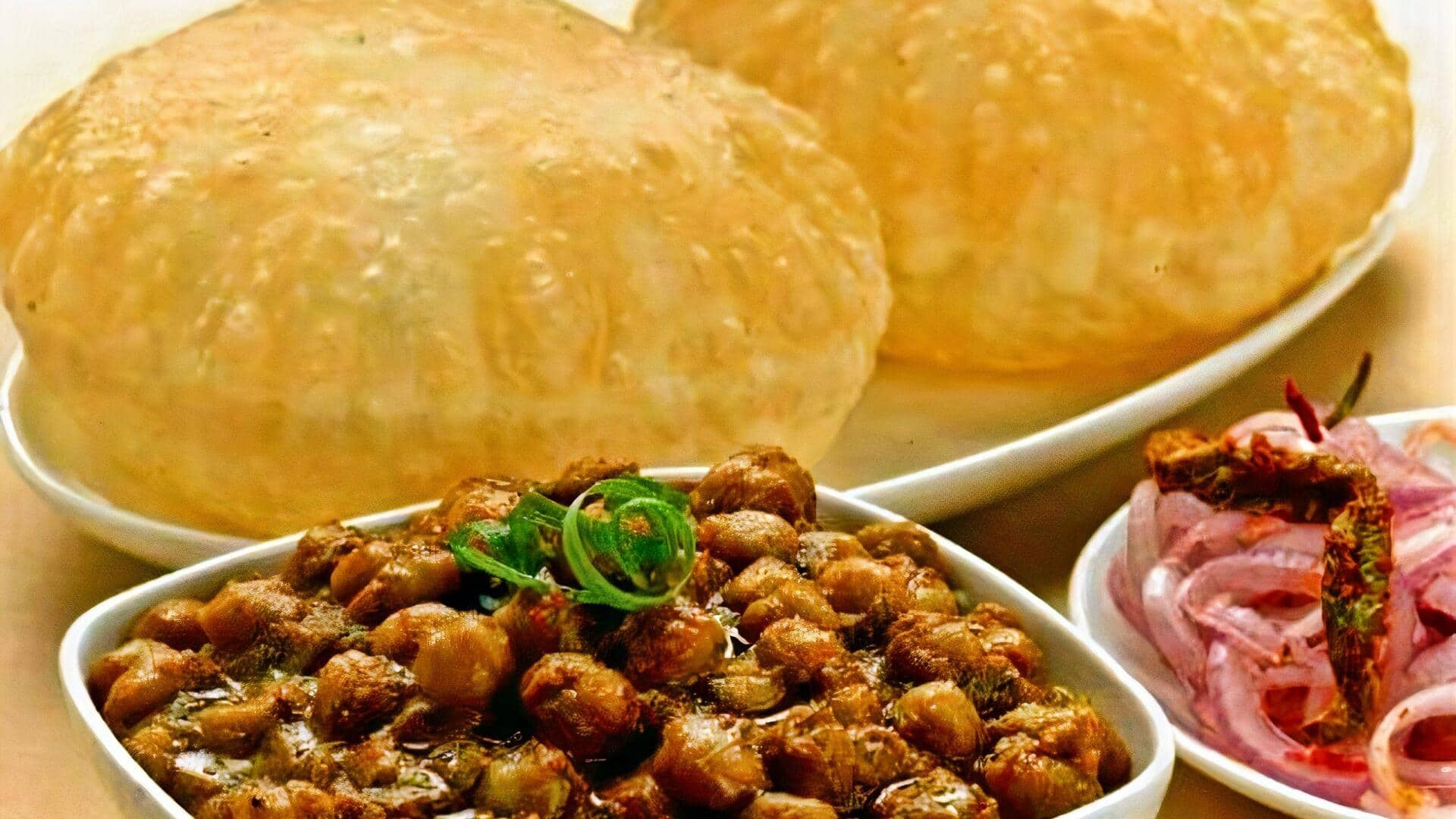Google Doodle is celebrating one of India’s most popular breakfast foods—idli. Soft, light and packed with flavour, idlis are often enjoyed with hot sambar, ghee or fresh coconut chutney, making them a favourite
across generations. The doodle’s artwork is inspired by a banana leaf, traditionally used as a plate in South Indian homes. While idlis are widely loved, their exact origin remains unclear, with several stories and theories about how this iconic dish came to be.
What Does The Google Doodle Depict?
The doodle creatively highlights idlis and their traditional accompaniments. The first “G” features white grains, likely rice, the primary ingredient for idlis. The first “O” shows a bowl of white substance, while the second “O” depicts idli batter in a traditional steamer. The next “G” is formed by several cooked idlis, the “L” is shaped using various chutneys, and the final “E” represents a side dish.
When And Where Did Idli Originate?
In a 2018 report, the talk show host and journalist, Vir Sanghvi, mentioned that food historian KT Achaya believes idlis may have come to India from Indonesia. The Indian idli is thought to be an earlier version of the Indonesian dish called kedli. This could have happened because there were trade links between South India and Indonesia, and cooks on Indian ships may have learned the recipe from them and brought it back home.
Another theory suggests that Arab traders who settled on the South Indian coast influenced the creation of idlis. Since they could not always find halal food, they ate steamed rice balls with coconut chutney.
Food historian Kurush Dalal told the Indian Express that rice has only been grown in South India for about 3000 years. This means that idlis, which are made from rice, cannot be older than that. He also noted that the practice of fermenting rice batter and then steaming it the next day developed later, which affects how long the dish, as we know it today, has actually existed.





